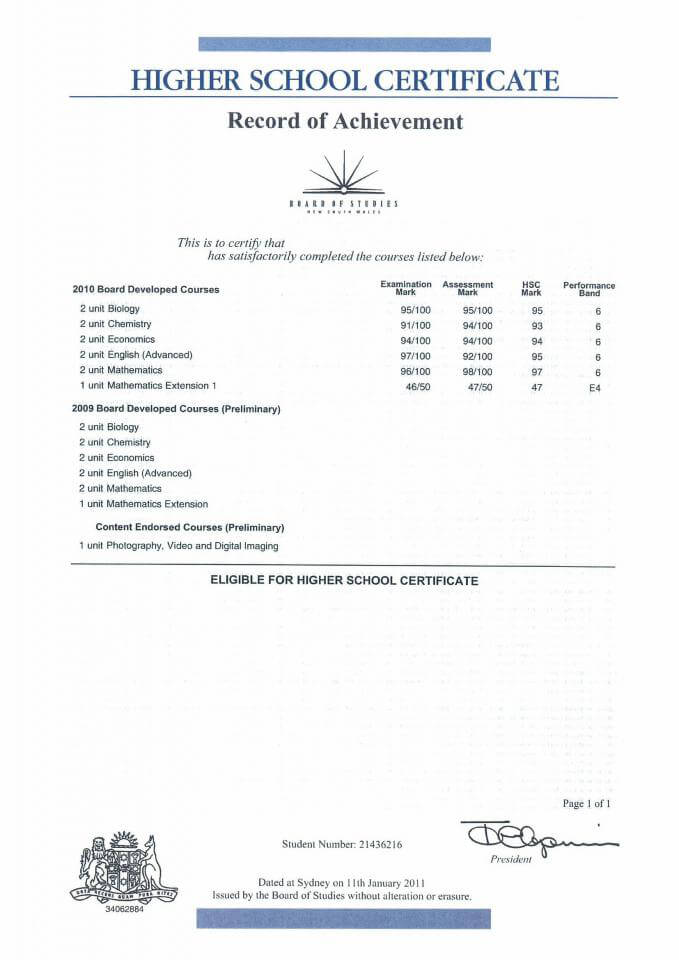All About ATAR & Scaling
The beginner’s guide to ATAR & Scaling is an in-depth tutorial on how an ATAR is determined. This guide covers the process from determining your HSC marks to an ATAR as well as strategies you can implement to take advantage of the scaling of different subjects.
Let’s begin by understanding the difference between HSC marks and an ATAR (Australian Tertiary Admission Rank).
ATAR vs HSC Marks
What are HSC Marks?
HSC marks provide information about how well you have performed in each of the courses you have completed. So we can better understand this, let’s look at a table below to see what HSC marks are.
| Table: What are HSC Marks? | |
| HSC Mark | |
| What is an HSC mark? | Information about how well you have performed in each course |
| What does HSC mark indicate? | Your performance in the different courses |
| What is the maximum HSC mark attainable? |
|
| Who determines the HSC mark? | NESA (NSW Education Standards Authority) |
| How is it calculated? | HSC Mark is the average of HSC Exam mark and moderated assessment mark. |
You can see a copy of an actual student’s HSC Record of Achievement from NESA (formerly known as Board of Studies) below.
What is an ATAR?
You will receive an ATAR (Australian Tertiary Admission Index) after you have completed the HSC; all students who sit the HSC receive one. Your ATAR is a number between 0.00 and 99.95 with increments of 0.05. It is a numerical measure of a student’s overall academic achievement in relation to other HSC students.
| Table: What is an ATAR? | |
| ATAR | |
| Acronym | Australians Tertiary Admission Rank |
| What is ATAR? | Information about how well your have performed overall against other students |
| What does ATAR indicate? | Position/Rank in relation to Year 7 students you began school with |
| What is the maximum ATAR attainable? | 99.95 (Top 0.05%) |
| How many students can get 99.95 ATAR? | 40-50 students |
| Who determines the ATAR? | University Admission Centre (UAC) |
Remember, ATAR is a rank and not a mark.
You can see a copy of an actual student’s Australian Tertiary Admission Rank Advice from UAC (The University Admissions Centre) below. The student obtained an ATAR of 99.7. This means this student performed better than 99.7% of their cohort.
Why do we need the ATAR?
The ATAR allows universities to rank students for selection into their courses. It’s calculated by universities and released by the UAC. Visit UAC website to view cut-offs for different university courses or visit the Matrix ATAR Calculator to search the University Courses.
Why don’t universities use HSC marks for selection into their courses?
Students study different combinations of HSC subjects. Therefore comparing a student’s overall performance based on HSC marks is difficult.
For example, how would you compare Jack’s result of 95 English Advanced with his friend who scored 97 in English Standard? Who performed better? In order to compare a student’s overall performance fairly and equitably, UAC converts this into a UAC score and then into your ATAR.
What is ATAR used for?
Universities use your ATAR on its own or with other selection criteria, to rank and select applicants for admission into university courses.
Who is eligible for an ATAR?
To be eligible for an ATAR you must satisfactorily complete at least 10 units of ATAR courses.
These ATAR courses must include at least:
- eight units from Category A courses (courses that have academic rigour and depth of knowledge providing an adequate background for tertiary studies.);
- two units of English;
- three ATAR courses of two units or greater;
- four subjects.
How is Your ATAR determined?
A student’s ATAR is a rank which is based on an aggregate of scaled marks in 10 units of ATAR courses comprising of:
- their best two units of English, and
- their best eight units from their remaining units, which can include up to two units of Category B courses.
The flowchart below outlines the process of determining your ATAR.

ATAR Calculation Process Flowchart
We will explain each step of the process in the following parts:
- Part 1: How HSC Marks are Calculated
- Part 2: Scaling of HSC Marks
- Part 3: How Your ATAR is Determined
- Part 4: How to Maximise Your ATAR
Want to Maximise Your ATAR?
- Read our Year 12 High School Survival Guide which will equip you with the requirements you need to know about your subjects.
- See why more than 4000 students trust Matrix. Book a free trial lesson!
© Matrix Education and www.matrix.edu.au, 2018. Unauthorised use and/or duplication of this material without express and written permission from this site’s author and/or owner is strictly prohibited. Excerpts and links may be used, provided that full and clear credit is given to Matrix Education and www.matrix.edu.au with appropriate and specific direction to the original content.


